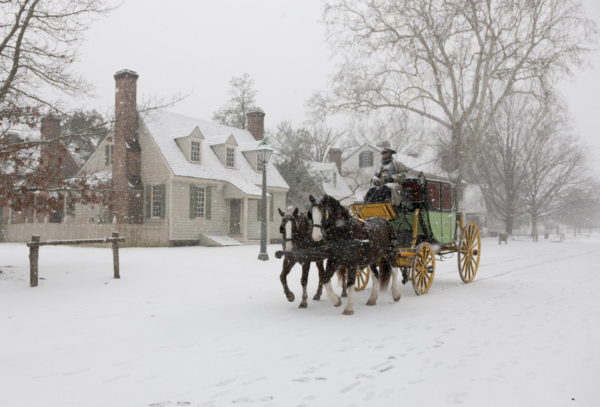
A foot of snow fell on Williamsburg Saturday, the largest one-day accumulation since the record was set in 1980. While the kids rejoiced over school’s cancellation and neighbors started to dig out their driveways, I dipped into the archives to see how recent experience compared to 18th-century Virginia winters.
From what I discovered it appears heavy snowfalls in the Tidewater were as unusual back then as they are now. The “Little Ice Age” dropped average temperatures in the colonies several degrees from the 16th to 19th centuries, but in Tidewater Virginia, rain seemed to be more common than snow. In the hills of western Virginia, where temperatures more frequently dipped below freezing (and where Thomas Jefferson and James Madison lived), snow was more common.
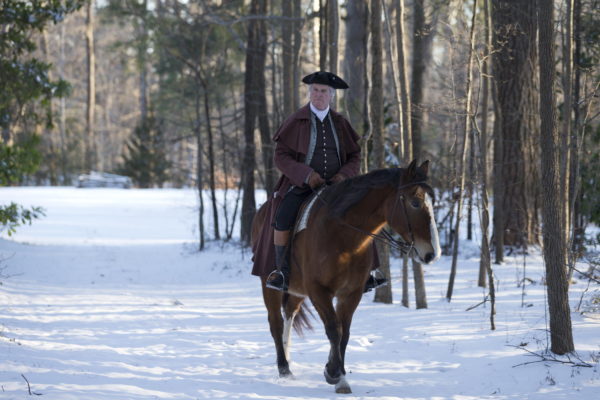
Several Virginians, including Jefferson and Madison, kept weather logs for periods of time. The averages they recorded tended to run 3-5 degrees colder than today’s. Virginia Governor Francis Fauquier tracked temperatures from 1760-62. He found that January was the only month where the average low slipped below freezing, at 30 degrees. December was second-coldest at 33. So it’s not surprising that mentions of rain are more frequent than snow in the anecdotal record.
Jefferson included a chapter on “Climate” in his Notes on the State of Virginia. It included a chart based on weather observations made in Williamsburg from 1772-1777. The lowest monthly average he found was 38 degrees in January, rather warmer than what Fauquier found. He did not differentiate between inches of rain and snow.

Still, scattered sources suggest that the Revolutionary period had its share of severe winter weather, and not just confined to a rough time at Valley Forge or the Washington’s crossing of the icy Delaware in 1776. Jefferson mentioned that the winter of 1740-41 was remembered as “the cold winter.”
It must have been rough if it was worse than 1737. The Gazette characterized the weather that year as “so excessive bad, for some time past, that there has been scarce any passing the rivers, for ice, or traveling for snow. And we have accounts from several places, of persons being frozen to death, and others drowned, by attempting to cross the rivers.”

Such commentary, however, was infrequent, suggesting that snow was mostly a nuisance to be tolerated during the shortest days of the year. The priorities probably didn’t extend much farther than keeping a warm fire burning and ensuring the welfare of the members of the household-and the animals.
Landon Carter, one of Virginia’s wealthiest planters, complained about the severity of the winter in 1770 in a way that sounds oddly contemporary: “It is hardly worthwhile to think of the badness of this winter,” he wrote, “but it has exceeded any that I ever remember and as our climate is thus changed I must wonder what succeeding years will do for firewood. We now have full ¾ of the year in which we are obliged to keep constant fires… I must think that in a few years the lower parts of this country will be without firewood but pines have a quick growth and we must find out a way of burning them unless we shall be happy in discovering mines of coal.”
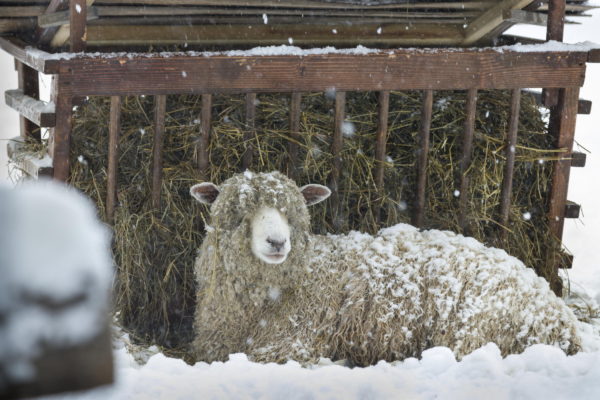
During harsh winters Carter fretted over the survival of his livestock when the ground was frozen. Once he had a lamb that perished in the cold dissected, finding that “the fodder it had eaten lay in sticky stems from its stomach upward into its throat… poor creatures, they can get no grass.”
He noted his “dread” of snow still on the ground come February, blaming the elements for the death of some newborn lambs. So he ordered the construction of “a very warm house and boarded it at bottom that by the straw laid on the floor they might be drie and sweet.”
A few years later, Carter recorded a truly rare event, a winter tornado at Sabine Hall, his home about 50 miles due north of Williamsburg. The damage was “pretty great, though not irreparable.” The twister struck between 1 and 2 a.m. on Feb. 10, 1776, killing four sheep and destroying his fencing, tobacco house, a shed, part of the stable, and part of a brick piazza. “Nothing but the mercy of the Supreme being has saved us on this hill,” he wrote.
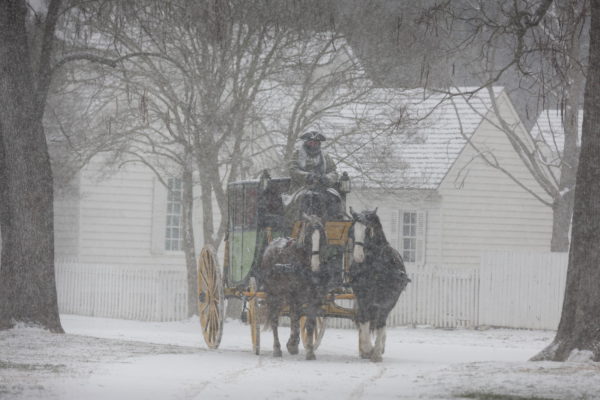
An epic snowfall lasted for days in late January 1772. At Mount Vernon George Washington noted its progress: “[Jan.] 27. A snow which began in the night and was about 5 or 6 Inches deep this morning kept constantly at it the whole day with the wind hard and cold from the northward.”
It continued through the next day “with equal violence,” accumulating about three feet, with the fierce wind creating much higher snowdrifts. The morning of the 29th offered what turned out to be a brief respite, with the “fine pleasant morning” soon giving way to more snow that night. That day he rode “with great difficulty” as far as his mill, “the snow being up to the breast of a tall horse everywhere.” Washington ended up housebound for nearly two weeks. Probably drove Martha nuts.
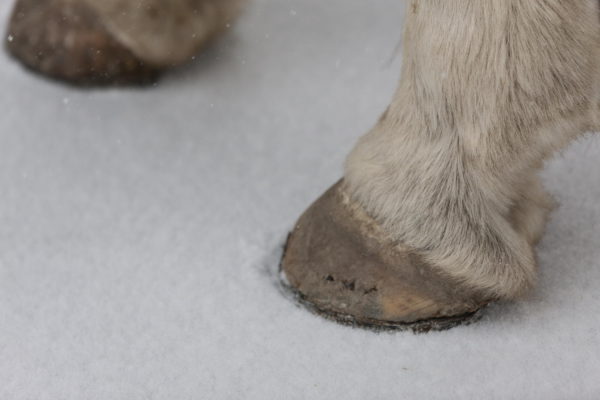
Thomas Jefferson had a dramatic encounter with the same storm. Traveling west from Charles City to Monticello with his new bride, Martha, they rode headlong into oncoming blizzard. Ditching their carriage about eight miles from home, they made the rest of the increasingly treacherous journey on horseback. Daughter Martha wrote that she had heard the story many times: “they arrived late at night, the fires all out and the servants retired to their houses for the night.”
Reported the Virginia Gazette: “the badness of the roads, occasioned by the late deep snows and continuance of other sever weather,” led the governor, Lord Dunmore, to delay the opening of the general assembly session in Williamsburg for a week so it could reach a quorum.
The Gazette also apologized for the paucity of news from the north, attributable to the post riders being slowed by the storm. In fact, the information didn’t start flowing again until March.
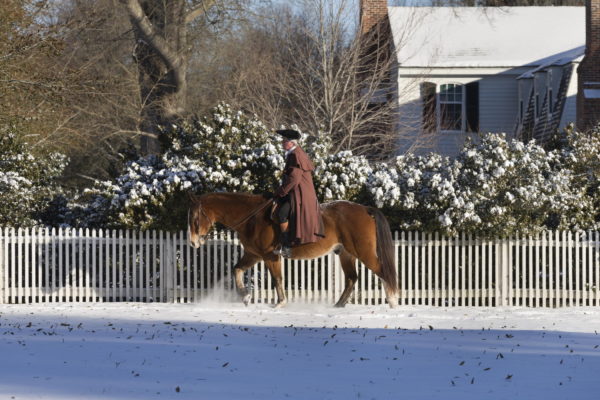
In 1777, a northern merchant, Ebenezer Hazard, encountered blustery weather as he passed through Williamsburg on his way to Savannah. His catalog of complaints included “very disagreeable weather,” “sloppy” streets, and more than one snowfall. “Froze last night,” he wrote on Dec. 4. He also gave an unfavorable review to the General Assembly meeting in the Capitol. He was “not much entertained” by their provincial debates, and scorned the gambling, which was “amazingly prevalent” even among the elected representatives.
The next day high winds stymied his effort to cross the James River and continue south into North Carolina. More “rain, hail, and snow” fell; it took him another week to escape town. His mood did not seem to improve.
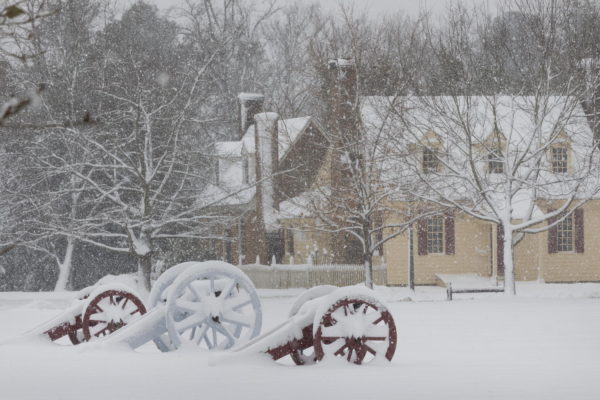
Was it nostalgia or science speaking when Jefferson wondered if winters weren’t as bad as they used to be? (Picture young Tom headed off to school, neck-deep in drifts, uphill both ways…) A “change in the climate” seemed to be underway, he wrote in Notes on the State of Virginia: “Snows are less frequent and less deep. They do not often lie, below the mountains, more than one, two, or three days, and very rarely a week. They are remembered to have been formerly frequent, deep, and of long continuance. The elderly inform me the earth used to be covered with snow about three months in every year. The rivers, which then seldom failed to freeze over in the course of the winter, scarcely ever do so now.” Jefferson worried that “unfortunate fluctuation” in the spring could be hazardous to crops.
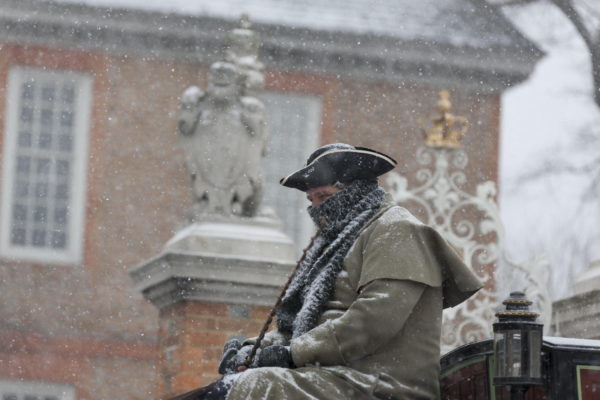
In really cold weather, ponds and small rivers might freeze, allowing for some fun in the snow. It would have been a far cry from a New England winter, but William Byrd “slid on skates” near his Westover Plantation home on the James River back in 1709. And Sarah Pitt was one Williamsburg merchant who advertised “fluted and plain skates, with and without leather” available in her shop in a Nov. 1766 issue of the Virginia Gazette.
In 1780 it was so cold that the York and James Rivers reportedly froze enough for people to easily walk across. Even, according to the Gazette, “six loaded wagons” which traversed the James “from Warwick to the opposite shore.” Now that’s confidence.
But it would probably be fair to say that when a heavy snow hit in the 18th century, the average Williamsburg resident, unaccustomed to such uncivil weather, was best served by staying home and giving it a couple of days to melt. It’s not a bad strategy to employ today, either.
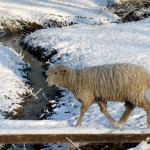
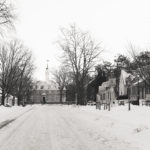
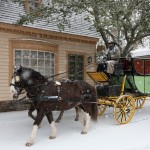
As always very informative, and makes me appreciate today’s modern conveniences.
Excellent research and summary! Thanks for sharing!
Thanks for sharing this. I actually wondered to myself the other day if you had any records of notable snowfall events during the colonial period.
The thought of riding horseback for 8 miles in a snow storm is not a pleasant one. Bonus points for car heaters.